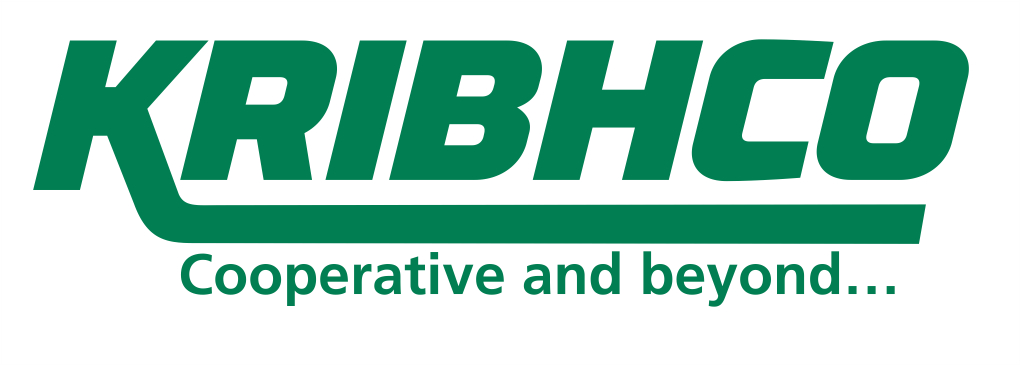Exploring the Potential of Open Network for Digital Commerce (ONDC) in India


In the fast-paced realm of digital commerce, where giants have long reigned supreme, a new initiative is emerging to level the playing field and empower businesses of all sizes. Enter the Open Network for Digital Commerce (ONDC) in India, a government-backed initiative set to revolutionize the way people shop and transact online.
ONDC, with its open and interoperable platform, seeks to promote competition, foster innovation, and create opportunities for small businesses and MSMEs to thrive in the digital economy. Gone are the days of restricted access and limited choices; ONDC is poised to disrupt the status quo, empowering businesses to reach new heights and consumers to discover a world of possibilities.
In this article will delve into the potential benefits, challenges, and key aspects of ONDC, as well as provide additional information to help readers gain a comprehensive understanding of this groundbreaking initiative.
Table of Contents
What is ONDC?
ONDC, which stands for Open Network for Digital Commerce, is a pioneering initiative backed by the Government of India. It aims to establish an open and interoperable platform for digital commerce in the country. The primary objective of ONDC is to foster competition, promote innovation, and facilitate the participation of small businesses and MSMEs (Micro, Small, and Medium Enterprises) in the rapidly growing digital economy.
Unlike traditional e-commerce platforms that operate on closed systems, ONDC is designed to be an inclusive and level playing field for businesses of all sizes. It operates on open protocols, ensuring that businesses, regardless of their scale or resources, can participate and benefit from the platform. By removing barriers to entry, ONDC seeks to empower small businesses and encourage them to embrace the digital transformation, enabling them to compete with larger enterprises.
The government launched ONDC in February 2022 under the supervision of the Department for Promotion of Industry and Internal Trade (DPIIT). As a non-profit organization, ONDC is governed by a board of directors responsible for shaping its vision and strategic direction.
Benefits of ONDC

The benefits of the Open Network for Digital Commerce (ONDC) are far-reaching, impacting businesses, consumers, and the Indian economy as a whole. Let’s delve deeper into the advantages that ONDC brings to the table:
1. Increased competition
ONDC is designed to create a more competitive environment in the e-commerce sector. By enabling businesses of all sizes to participate on a level playing field, ONDC encourages healthy competition among sellers. This competition can drive down prices, improve service quality, and foster innovation as businesses strive to differentiate themselves and attract customers.
2. More choice
One of the key advantages of ONDC is its potential to offer consumers a broader range of choices. By connecting buyers with a diverse array of sellers, ONDC opens up a vast marketplace where customers can find products from various sources. This expanded selection empowers consumers to make informed decisions and find precisely what they are looking for.
3. Improved efficiency
ONDC aims to enhance the efficiency of the e-commerce supply chain. By optimizing processes such as order management, inventory management, and logistics, ONDC can streamline operations and reduce costs for businesses. This, in turn, can lead to cost savings for consumers and potentially lower prices for products and services.
4. New opportunities for small businesses
One of the core objectives of ONDC is to facilitate the participation of small businesses and Micro, Small, and Medium Enterprises (MSMEs) in the digital economy. By providing them with an open and interoperable platform, ONDC enables small businesses to showcase their products and reach a wider audience. This increased visibility can boost their sales, generate new employment opportunities, and contribute to economic growth.
5. Boost to the Indian economy
ONDC’s overarching goal is to foster growth and innovation in the digital commerce sector, ultimately benefiting the Indian economy. By promoting competition, facilitating market access for small businesses, and enhancing operational efficiency, ONDC can contribute to job creation, increased revenue generation, and overall economic development.
6. Consumer empowerment
ONDC empowers consumers by providing them with a platform where they have access to a wide range of products from various sellers. This increased choice and competition enable consumers to make more informed purchasing decisions based on factors such as price, quality, and customer reviews. Additionally, ONDC’s emphasis on data protection and privacy can further instill consumer confidence, ensuring a secure and trustworthy online shopping experience.
7. Bridging the digital divide
ONDC’s inclusive approach aims to bridge the digital divide by providing equal opportunities to businesses across various regions and socio-economic backgrounds. By democratizing access to the digital marketplace, ONDC can help reduce disparities and empower businesses in remote or underprivileged areas to participate and thrive in the digital economy.
In summary, ONDC offers numerous benefits. They collectively contribute to the vision of a more accessible, dynamic, and inclusive digital commerce ecosystem in India.
Challenges of ONDC

While the Open Network for Digital Commerce (ONDC) holds immense potential, there are several challenges that the initiative must address to achieve widespread adoption and success. Overcoming these obstacles is crucial to harnessing the full benefits of ONDC and ensuring its effectiveness in transforming the Indian digital commerce landscape. Let’s explore the key challenges that ONDC faces:
1. Building trust
Establishing trust is paramount for any digital commerce platform, and ONDC is no exception. To gain the trust of consumers and businesses, ONDC must demonstrate a strong commitment to data protection and privacy. Implementing stringent security measures, robust encryption protocols, and transparent data handling practices will be vital. Furthermore, ONDC needs to assure users that their personal and financial information will be safeguarded from unauthorized access and misuse.
In addition to data protection, having a reliable and efficient dispute resolution mechanism is essential. Addressing concerns and resolving disputes promptly and fairly will foster trust among participants in the ONDC ecosystem. This may involve establishing dedicated dispute resolution bodies, implementing clear guidelines, and ensuring transparent communication channels.
2. Scaling up
To realize its vision of revolutionizing digital commerce in India, ONDC must be capable of scaling up rapidly. As more businesses and consumers join the platform, the infrastructure must be able to handle increased traffic and transactions efficiently. This requires substantial investments in technology, network infrastructure, and logistics.
Collaboration with stakeholders, including government bodies, private enterprises, and logistics providers, will be vital for scaling up ONDC effectively. By fostering partnerships and leveraging existing networks, ONDC can ensure a seamless experience for users while expanding its reach across the country.
3. Competition from existing platforms:
ONDC faces stiff competition from established e-commerce platforms like Amazon and Flipkart, which already have a significant market presence, extensive customer bases, and well-developed infrastructure. These platforms have built trust over time and are deeply entrenched in the Indian e-commerce ecosystem.
To successfully compete with these giants, ONDC needs to offer unique value propositions that differentiate it from existing platforms. This may include providing superior customer service, offering competitive pricing, ensuring a diverse product range, and delivering a seamless user experience. Collaboration with established players or leveraging partnerships with local businesses can also help ONDC establish a foothold in the market and gain a competitive edge.
4. Regulatory and policy challenges:
As a government-backed initiative, ONDC must navigate through regulatory and policy challenges to operate effectively. Compliance with existing laws, such as consumer protection regulations, intellectual property rights, and competition laws, is crucial. ONDC needs to ensure that its framework aligns with the evolving regulatory landscape and that it contributes positively to the overall growth of the digital commerce sector.
To address regulatory challenges, close collaboration between ONDC, government bodies, and industry stakeholders is essential. This collaboration can facilitate the development of regulatory frameworks that foster innovation, competition, and consumer protection, while also ensuring a level playing field for all participants.
Overcoming the challenges faced by ONDC is crucial for its success in revolutionizing digital commerce in India. With a strong commitment to addressing these challenges, ONDC has the opportunity to reshape the digital commerce landscape and create a more inclusive and vibrant ecosystem for all participants.
ONDC’s Current Operations

Today, ONDC is making remarkable strides in its mission. Its operations have expanded to an impressive 236 cities across India, effectively connecting diverse regions and enabling businesses to thrive on a national scale. With over 36,000 merchants already on board, the platform is becoming a vibrant hub for commerce, catering to the needs of both consumers and sellers.
Recognizing the importance of logistics, ONDC has partnered with the state-run Indian postal service to provide efficient and reliable delivery services to small traders nationwide. This collaboration ensures that businesses, regardless of their size, can offer timely and hassle-free shipments, enhancing customer satisfaction and boosting their competitive advantage.
To empower MSMEs further, ONDC has forged strategic alliances with leading technology players such as Magicpin and Zoho. These collaborations offer small businesses access to the necessary tools and resources to seamlessly integrate onto the ONDC platform, unleashing their potential in the digital economy. With this support, MSMEs can expand their reach, attract a wider customer base, and accelerate their growth trajectory.
Looking to the future, ONDC has set ambitious targets to elevate e-commerce penetration in India. By leveraging its platform’s capabilities and fostering collaboration with key industry stakeholders, ONDC aims to achieve a significant milestone: raising e-commerce’s share of consumer purchases to 25% within the next two years. This bold vision underscores ONDC’s commitment to driving economic growth, job creation, and a digital transformation that benefits all participants.
While still in its early stages, ONDC has already garnered attention as a potential disruptor in the Indian e-commerce market. Its mission to create a level playing field, empower small businesses, and enhance the overall shopping experience holds tremendous promise. As the initiative continues to unfold, the industry eagerly anticipates the impact ONDC will have in the long run. With its determination to reshape the e-commerce landscape, ONDC has undeniably become a force to be reckoned with, igniting anticipation and curiosity throughout the digital commerce ecosystem.
Implementation Strategy of ONDC

To ensure the successful implementation of the Open Network for Digital Commerce (ONDC), a well-defined strategy is crucial. The following key elements outline the implementation approach for ONDC:
1. Collaborative Approach
ONDC follows a collaborative approach that involves close cooperation between the government, industry stakeholders, and technology partners. This collaboration aims to leverage the collective expertise and resources to build a robust and inclusive digital commerce ecosystem.
The government plays a vital role in providing policy support, regulatory frameworks, and necessary infrastructure to enable the smooth functioning of ONDC. Industry stakeholders, including e-commerce businesses, logistics providers, and financial institutions, contribute their insights and experiences to shape the platform’s development. Technology partners bring in their expertise in designing and implementing the required technical infrastructure.
2. Phased Implementation
ONDC is implemented in a phased manner to ensure a systematic and efficient rollout. This approach allows for testing, refinement, and scalability at each stage. The phased implementation also enables stakeholders to adapt and incorporate feedback, ensuring that the platform meets the evolving needs of businesses and consumers.
During the initial stages, the focus is on developing the core infrastructure and establishing the foundational components of ONDC. This includes building the open protocols, creating the necessary APIs (Application Programming Interfaces), and designing the architecture for seamless interoperability.
Subsequently, the implementation progresses to pilot testing with selected participants, including small businesses, MSMEs, and consumers. This testing phase helps identify and address any technical or operational challenges, while also gathering valuable insights and feedback for improvement.
Once the platform has undergone rigorous testing and refinement, it moves towards wider adoption. The gradual expansion allows for adequate scaling up of infrastructure, addressing regulatory requirements, and ensuring a smooth transition for all stakeholders.
3. User Onboarding and Education
A key aspect of implementing ONDC successfully is user onboarding and education. To encourage adoption, ONDC needs to provide comprehensive guidance and support to businesses and consumers on how to effectively utilize the platform’s features and benefits.
User education programs, workshops, and training sessions can be organized to familiarize businesses with the functionalities of ONDC, including product listing, inventory management, and order fulfillment. Consumer awareness campaigns can also be conducted to highlight the advantages of shopping on ONDC, such as increased choice, competitive prices, and reliable service.
Furthermore, providing user-friendly documentation, FAQs, and dedicated customer support channels can help address queries and concerns promptly. This emphasis on user onboarding and education plays a critical role in driving engagement, building trust, and ensuring a positive experience for all participants.
4. Continuous Monitoring and Iterative Development:
The implementation of ONDC requires continuous monitoring, evaluation, and iterative development to address emerging challenges and capitalize on new opportunities. Regular feedback loops and data analysis can provide valuable insights into the platform’s performance, user behavior, and areas for improvement.
Based on user feedback and market dynamics, ONDC can prioritize feature enhancements, optimize the platform’s performance, and introduce new functionalities to meet evolving needs. This iterative approach ensures that ONDC remains agile, adaptable, and responsive to the changing digital commerce landscape.
Frequently Asked Questions (FAQs)

What is the purpose of ONDC?
ONDC aims to create an open and interoperable platform for digital commerce in India. It seeks to promote competition, innovation, and inclusivity by enabling small businesses and MSMEs to participate in the digital economy.
When was ONDC launched?
ONDC was launched by the Department for Promotion of Industry and Internal Trade (DPIIT) of the Government of India in February 2022.
Is ONDC a non-profit organization?
Yes, ONDC operates as a non-profit organization and is governed by a board of directors.
What distinguishes ONDC from other e-commerce platforms?
ONDC is based on open protocols, ensuring that businesses of all sizes can participate without discrimination. This openness creates a level playing field and encourages healthy competition, ultimately benefiting both businesses and consumers.
How does ONDC create a level playing field?
ONDC establishes a common platform for buyers and sellers to interact, setting standards for pricing, delivery, and other aspects of e-commerce, ensuring fair competition among businesses of all sizes.
What is the current reach of ONDC?
ONDC has expanded its operations to 236 cities across India, connecting diverse regions and facilitating commerce on a national scale.
Who has ONDC partnered with for logistics services?
ONDC has partnered with the state-run Indian postal service to provide logistics services to small traders across the country, ensuring efficient and reliable delivery options.
Conclusion
The Open Network for Digital Commerce (ONDC) represents a bold and ambitious initiative that has the potential to transform the Indian e-commerce landscape. By promoting competition, fostering innovation, and empowering small businesses, ONDC can bring about significant changes in the digital economy. However, it is essential to address challenges such as building trust, scaling up, and competing with established platforms. If successful, ONDC can contribute to job creation, economic growth, and a more accessible digital marketplace for all.
To learn more about ONDC, visit their official website at https://ondc.org/.
Additional Information
- ONDC is currently in its early stages of development but is expected to be fully operational by the end of 2023.
- The initiative is supported by the Government of India and aims to serve as an open and inclusive platform for businesses in the digital commerce sector.
- ONDC’s open protocols enable businesses of all sizes to participate, regardless of their scale or resources.
- DPIIT oversees the implementation and development of ONDC, working closely with various stakeholders to ensure its success.
